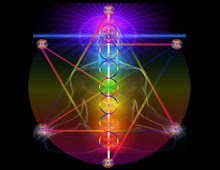 Some researchers claim that geomagnetic storms affect brain waves and hormone levels, causing a number of different reactions, predominately in males. While a few women may also experience changes during these storms, they generally seem less affected by the sun's behavior. Reacting to changing hormone levels, some men may become increasingly irritable and aggressive, while others may instead become more creative.
Some researchers claim that geomagnetic storms affect brain waves and hormone levels, causing a number of different reactions, predominately in males. While a few women may also experience changes during these storms, they generally seem less affected by the sun's behavior. Reacting to changing hormone levels, some men may become increasingly irritable and aggressive, while others may instead become more creative. An increase in solar activity is found to increase psychotic episodes in individuals who already suffer from unstable psychological states. While we might relate such behavior to a full moon, in 1963, Dr. Robert Becker and his colleague, Dr.Freedman, demonstrated that solar changes also lead to a noticeable increase in psychotic activity. Yet these reactions are not simply isolated to a few particularly sensitive or unlucky individuals.
Evidence indicates that wars and international conflicts most often break out when sunspots are rapidly forming or rapidly decaying, as these are times when there are more intense geomagnetic storms. In addition, this increase in solar activity also correlates to periods of more accidents and illness, as well as an increase of crimes and murders. The entire biosphere is affected by this electromagnetic pollution, and human behavior seems to react accordingly.
Not all geomagnetic storms are disruptive. But over time, these extremes in solar activity may also affect periods of earthly conflict. The data on cycles of war and peace extend back at least 2,500 years. (Some believe that they may be traced even further, but the records are not as reliable.) Although some may argue that it seems as if there is always war somewhere, records show that periods of conflict increase and decrease in nearly regular cycles.
Scientific Investigations into solar activity and a possible effect on society
As early as 1915, some scientists were beginning to recognize connections between solar activity and human behavior. This work began with Russian scientist Alexander Chizhevsky, who observed that mass changes in human behavior correlated to sunspot cycles.
In the 1930s, Professor Raymond Wheeler, a historian at the University of Kansas, took this observation one step further. His research afforded numerical rankings to the severity of individual battles correlating to solar cycles. His data was statistically analyzed by Edward Dewey, who validated the existence of these war cycles. Yet he was unable to make a definite connection with sunspot cycles because the data at that time was insufficient. In the 1980s, with a more detailed analysis of Wheeler's data, the connection became clear.
http://www.alexansary.com/Editorial/Sun%20spots%20and%20a%20weakened%20magnetic%20field.html







